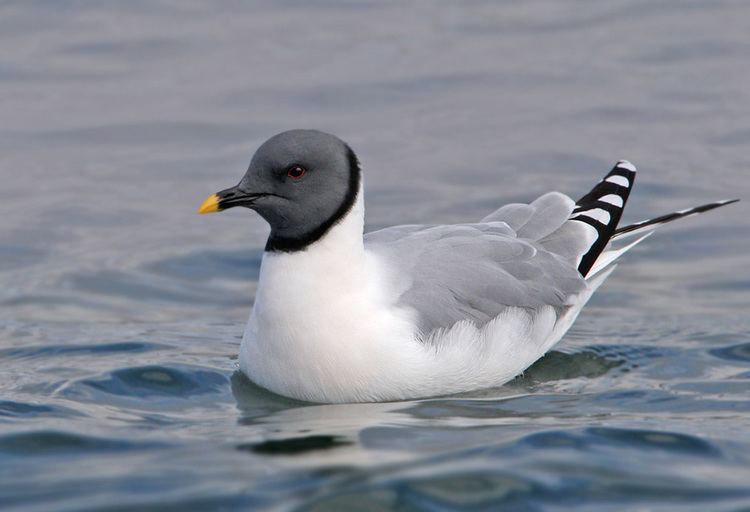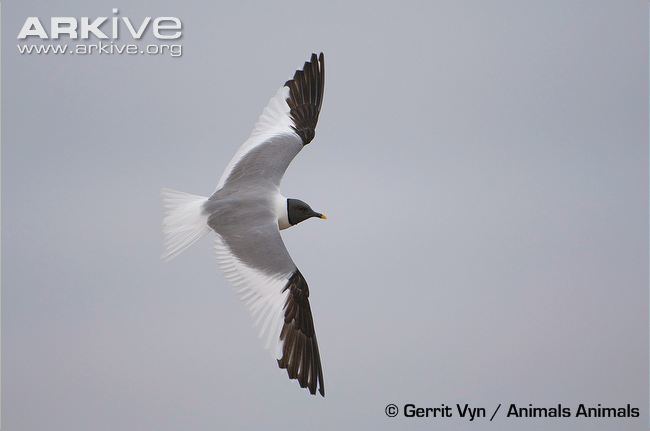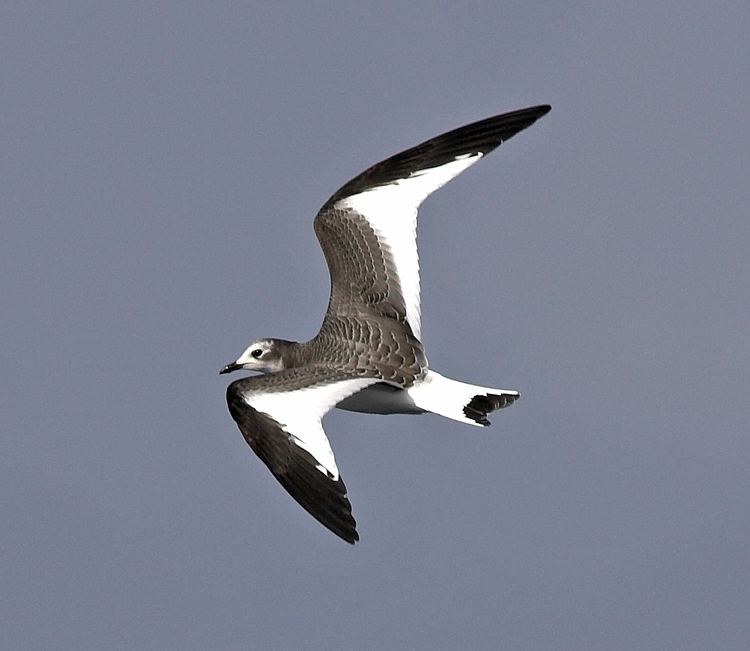Genus XemaLeach, 1819 Phylum Chordata Rank Species | Family Laridae Scientific name Xema sabini Higher classification Xema Order Shorebirds | |
 | ||
Similar Pomarine skua, Long‑tailed jaeger, Red phalarope, Ross's gull, Ivory gull | ||
Sabine s gull seaton
The Sabine's gull (Xema sabini), also known as the fork-tailed gull or xeme, is a small gull. Its generic placement is disputed; some authors treat it as the sole species in the genus Xema as Xema sabini, while others retain it in the genus Larus as Larus sabini. It breeds in the Arctic and has a circumpolar distribution through northernmost North America and Eurasia. It migrates south in autumn; most of the population winters at sea in the Pacific off western South America in the cold waters of the Humboldt Current, while Greenland and eastern Canadian birds cross the Atlantic by way of the westernmost fringes of Europe to winter off southwest Africa in the cold waters of the Benguela Current. Occasionally individual Sabine's gulls can be seen off other coasts such as the northeastern United States or further east in Europe, typically following autumn storms. It is recorded often enough inland in North America, Europe, and even Siberia, that it has been said to exhibit "cross-continental migration" in addition to migration at sea.
Contents
- Sabine s gull seaton
- Sabine s gull 24 august 2014 scilly
- Description
- Taxonomy and evolution
- Name
- References

The Sabine's gull breeds in colonies on coasts and tundra, laying two or three spotted olive-brown eggs in a ground nest lined with grass. It is very pelagic outside the breeding season. It takes a wide variety of mainly animal food, and will eat any suitable small prey. It also steals eggs from nesting colonies of Arctic terns.

Sabine s gull 24 august 2014 scilly
Description

The Sabine's gull is a small gull, 27 to 33 cm (11–13 in) in length and weighing 135 to 225 g (4.8–7.9 oz). The wings are long, thin and pointed with a span of between 81 to 87 cm (32–34 in). The bill, which is black with a yellow tip, is around 2.5 cm (0.98 in) long.
This species is easy to identify through its striking wing pattern. The adult has a pale grey back and wing coverts, black primary flight feathers and white secondaries. The white tail is forked. The male's hood darkens during breeding season. Young birds have a similar tricoloured wing pattern, but the grey is replaced by brown, and the tail has a black terminal band. Juveniles take two years to attain full adult plumage. They have a very high-pitched and squeaking call.
Taxonomy and evolution
The Sabine's gull is usually treated as comprising a monotypic genus; it is only placed within the genus Larus when the genus is enlarged. The black bill and notched tail are almost unique within the gulls, as they are shared only with the swallow-tailed gull of the Galapagos. On the basis of this the two species were often thought to be each other's closest relatives, a hypothesis ruled out by a number of behaviour and ecological differences. Mitochondrial DNA studies confirmed that they are not closely related, and the closest relative of the Sabine's gull is now thought to be the ivory gull, another Arctic species. The two species are thought to have separated around 2 million years ago, longer ago than most groups of gull species.
Geographical variation is slight; birds from Alaska are slightly darker and perhaps bigger. Most authorities recognise no races, but a few recognise four based on size and mantle (back) colour.
Name
The specific epithet and common name honour the Irish scientist Sir Edward Sabine, who sent a specimen to his brother Joseph Sabine; Joseph referred to it as Larus sabini in 1818. (The first accepted description was by Leach in 1819.) The Oxford English Dictionary gives the pronunciation /ˈsæbaɪn/ SAB-yn, which is the pronunciation of the surname according to a history of the Sabine family. However, some authorities give /ˈsæbɪn/ SAB-in. The genus name Xema appears to be an invented name without meaning.
